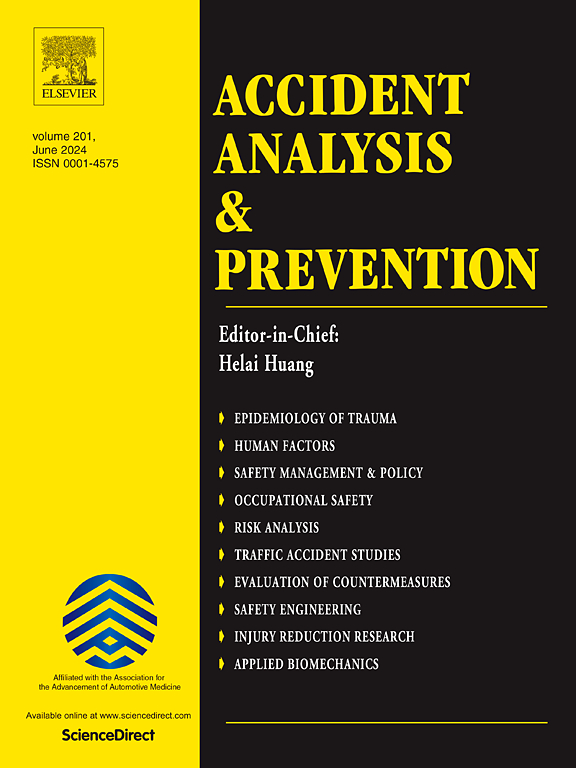Exploratory analysis of injury severity under different levels of driving automation (SAE Levels 2 and 4) using multi-source data
Abstract
Vehicles equipped with automated driving capabilities have shown potential to improve safety and operations. Advanced driver assistance systems (ADAS) and automated driving systems (ADS) have been widely developed to support vehicular automation. Although the studies on the injury severity outcomes that involve automated vehicles are ongoing, there is limited research investigating the difference between injury severity outcomes for the ADAS and ADS equipped vehicles. To ensure a comprehensive analysis, a multi-source dataset that includes 1,001 ADAS crashes (SAE Level 2 vehicles) and 548 ADS crashes (SAE Level 4 vehicles) is used. Two random parameters multinomial logit models with heterogeneity in the means of random parameters are considered to gain a better understanding of the variables impacting the crash injury severity outcomes for the ADAS (SAE Level 2) and ADS (SAE Level 4) vehicles. It was found that while 67 percent of crashes involving the ADAS equipped vehicles in the dataset took place on a highway, 94 percent of crashes involving ADS took place in more urban settings. The model estimation results also reveal that the weather indicator, driver type indicator, differences in the system sophistication that are captured by both manufacture year and high/low mileage as well as rear and front contact indicators all play a role in the crash injury severity outcomes. The results offer an exploratory assessment of safety performance of the ADAS and ADS equipped vehicles using the real-world data and can be used by the manufacturers and other stakeholders to dictate the direction of their deployment and usage.

 求助内容:
求助内容: 应助结果提醒方式:
应助结果提醒方式:


